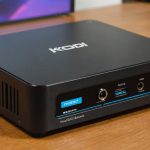Advanced Sensors in Smartwatches
The integration of advanced sensors in smartwatches is a significant leap in wearable technology. These sensors enable accurate tracking of health metrics, providing users with invaluable insights. Multi-sensor integration, particularly, enhances the accuracy of data collected. How does multi-sensor integration improve accuracy? By combining data from different sensors, it can filter out noise and cross-check information, leading to more precise results.
Recent advancements have seen the introduction of bio-sensors that can monitor heart rate, blood oxygen levels, and track activity more efficiently than ever. For example, accelerometers and gyroscopes work together to discern movements, providing detailed analysis of various activities. Leading brands, such as Apple and Fitbit, have embedded such technology in their latest models.
This might interest you : Master the art of daily reflection: a step-by-step guide to creating a digital journal on your tablet
Case studies of these brands reveal the real-world application and success of these sensors. What makes these smartwatches reliable? The continuous innovation in sensor technology ensures that these devices not only track basic health metrics but also adapt to new health parameters, leading to consistent performance improvements.
By integrating various wearable technology innovations, smartwatches are becoming essential tools for those interested in personal health and fitness, emphasising the increasing role of health metrics in daily life.
Also to read : Maximize your home”s safety: a comprehensive guide to setting up a smartphone-connected water leak detection system
Machine Learning and Data Analysis
Machine learning technology is reshaping the landscape of fitness tracking, offering a remarkable improvement in accuracy. With the implementation of advanced algorithms, fitness devices can now discern subtle patterns in physical activities. This enables them to more precisely track distinct movements such as steps, heart rate fluctuations, and caloric burn, adapting effectively to a user’s unique routine.
In the realm of data analysis, predictive analytics emerge as a game-changer. These tools anticipate user needs by analyzing historical data and user behavior. For instance, predictive models can foresee periods of heightened activity or recommend recovery times based on past performances. Such insights lead to a personalized and highly efficient fitness journey.
User experience is significantly enhanced through these advancements. Imagine a fitness tracker that doesn’t just follow your current activity but anticipates your next move based on previous patterns. Machine learning plays a pivotal role in this adaptive approach, providing a seamless and personalized experience.
Overall, these technologies are paving the way for exciting transformations in personal fitness management. Individuals leveraging these advancements can tailor their fitness regimes more effectively, achieving goals with tangible, data-driven insights. The future of fitness tracking lies in the fusion of machine learning and data analysis.
Real-Time Health Monitoring Features
In today’s era of smart technology, real-time monitoring plays a vital role in managing our well-being. These features greatly enhance our ability to track important health metrics conveniently and seamlessly.
Continuous Heart Rate Monitoring
Continuous heart rate monitoring is a key aspect of biometric data collection. By capturing your heart rate in real time, these devices provide an accurate picture of your cardiovascular health, adjusting automatically as you engage in different activities. This continuous data collection allows for the detection of irregularities, enabling timely healthcare decisions.
Blood Oxygen Measurement
Measuring blood oxygen levels continuously is crucial for understanding your body’s efficiency in oxygen delivery. Real-time health tracking ensures that deviations from normal levels are quickly identified, offering users practical insights into their respiratory health. This feature is especially beneficial for individuals with conditions affecting their oxygen saturation.
Sleep Quality Tracking
Sleep quality tracking analyses sleep patterns and durations. By collecting data throughout the night, these devices help identify potential sleep disturbances or deficiencies. Users often experience improved health insights by understanding their sleep cycles, facilitating better rest and overall health improvement.
Real-time monitoring, with its seamless biometric data collection, empowers users, fostering informed choices leading to enhanced health and well-being.
Seamless Integration with Mobile Apps
Mobile applications play a pivotal role in boosting the capabilities of smartwatches, transforming them into sophisticated health companions. Through efficient data synchronization, these apps enhance the accuracy of health metrics, providing users with precise insights into their fitness levels.
The interplay between a smartwatch and its companion app primarily ensures that all data is consistently updated. This synchronization extends beyond just numbers, offering users detailed analyses and recommendations for improving their health routines. For instance, fitness tracking apps can aggregate data from various sensors to present a comprehensive view of one’s physical activities, heart rate fluctuations, and even sleep patterns.
User experience becomes significantly enriched as mobile applications allow users seamless interaction with their data. They can set personalized goals, receive reminders for standing and movement, and even engage in friendly competition with others through shared activity challenges. Testimonials from users highlight the impact of app features, noting improved tracking precision thanks to advanced algorithms and real-time data feedback.
In summary, the integration of smartwatches with mobile applications offers users a robust platform for fitness tracking, making it a valuable addition to their daily health regimen. These tools collectively empower individuals to maintain or achieve optimum wellness.
User-Centric Design and Customization
In today’s digital age, the design of a smartwatch is as pivotal as its technical capabilities. The focus on interface usability ensures users can access data seamlessly. An intuitive design is paramount for effective data accessibility, allowing users to interact with their device effortlessly. It’s not just about aesthetics but ensuring the information is right where you need it.
Importance of Customizable Features
Customizable options are game-changers, especially when it comes to enhancing tracking accuracy. By allowing users to modify settings such as data types tracked or the specific metrics displayed, smartwatches can cater to individual fitness or health goals. This personalization not only improves user experience but also ensures the accuracy of the data collected is aligned with personal needs.
User Feedback and Brand Choices
User feedback plays a crucial role in shaping the design choices made by top-tier smartwatch brands. Companies take this input seriously, using it to refine features and ensure the product meets user expectations. Listening to users leads to innovations that keep devices both relevant and cutting-edge. The result? Smartwatches that are not only advanced in technology but also perfectly tailored to enhance their user’s lifestyle.
Future Trends in Fitness Tracking
Fitness tracking is poised for a profound evolution with future technologies leading the way. As wearable tech becomes more sophisticated, we anticipate exciting advancements in smartwatch technology. Emerging trends suggest a significant leap in fitness tracking innovations, with watches integrating proactive health monitoring systems. This will empower users to receive timely health alerts and insights, fostering a personalized health journey.
One of the most intriguing emerging trends is the potential role of augmented reality (AR) in fitness tracking. By projecting virtual elements into real-world environments, AR could revolutionize workout experiences, offering interactive environments for exercise routines, enhancing motivation, and providing real-time feedback on techniques.
Additionally, the integration of healthcare data is set to influence smartwatch capabilities dramatically. Future devices will likely become extensions of healthcare systems, allowing seamless data sharing with medical professionals. This integration will ensure comprehensive health profiles, enabling better-informed lifestyle choices and facilitating preventive health measures.
These fitness tracking innovations hold the promise of transforming health and wellness management. As technology progresses, consumers are encouraged to embrace these developments, optimising their fitness regimes to a level previously unimaginable. By staying informed about future technologies, users can make confident decisions about the most suitable tools for their health aspirations.






